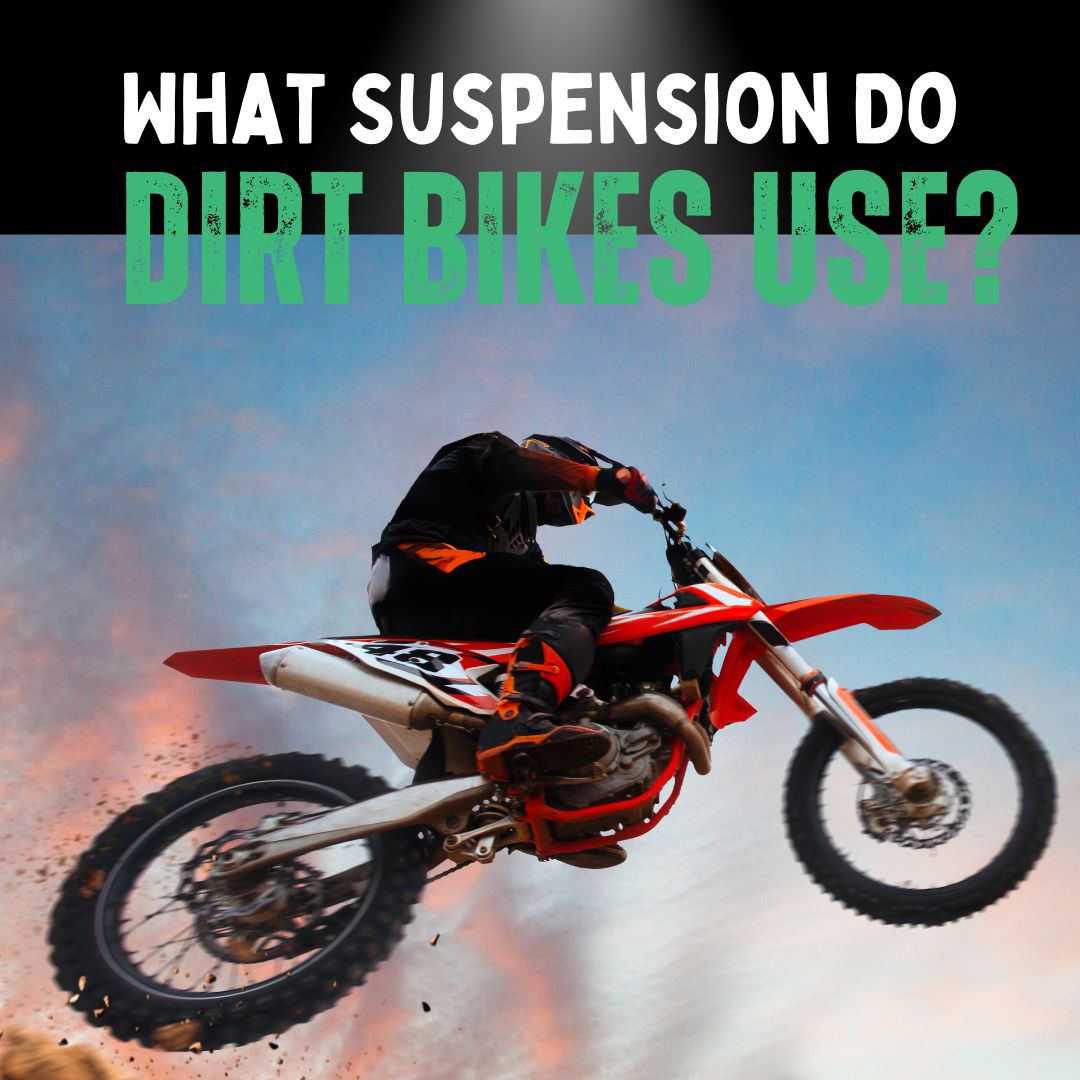
Updated: 25.4.25
Are you curious about what keeps dirt bikes so agile and responsive on rugged terrains?
It's all in the suspension system—a critical component that defines the performance of these thrilling machines.
In this article, we'll delve into the types of suspensions used in dirt bikes, their components, and why they matter so much.
Whether you're a biking enthusiast or just starting out, understanding these fundamentals can significantly enhance your riding experience.
Types of Dirt Bike Suspensions and Their Components
Dirt bikes, known for their resilience and agility, rely heavily on their suspension systems. Let's explore the common types:
Telescopic Forks
These are the most common suspension systems in modern dirt bikes. Consisting of a pair of fork tubes, telescopic forks are simple yet highly effective for diverse off-road conditions.
Inverted Forks
Also known as upside-down forks, these are staples in high-performance dirt bikes. They offer increased rigidity and more precise steering, ideal for aggressive riding styles.
Rear Suspension Systems
The rear suspension is crucial for absorbing shocks from uneven terrain and typically comes in two forms: monoshock and dual shock. Each plays a significant role in enhancing a bike’s overall performance.
Overview of Key Suspension Factors
Understanding key suspension factors is essential for optimizing your dirt bike experience.
Sag
This measures how much the suspension compresses under the rider's weight—vital for setting the correct ride height and suspension softness.
Preload
Adjusting preload fine-tunes the suspension for different weights and riding styles, even though bikes typically come factory-set.
Compression and Rebound Damping
These adjustments control how your suspension reacts under different conditions, directly affecting your bike’s handling and stability.
Practical Application: Suspension Tuning and Adjustment
Tuning your dirt bike’s suspension is part science, part art. Start with the manufacturer's settings as a baseline, then experiment with small changes to achieve the perfect balance for your riding style and terrain.
The Importance of Proper Suspension Setup
A well-tuned suspension system significantly improves your bike’s handling, comfort, and safety.
The Impact of Suspension on Dirt Bike Performance
- Handling and Stability: Suspension keeps the bike balanced and responsive.
- Ride Quality: Absorbs impacts for a smoother experience.
- Traction and Control: Maintains tire contact for better grip.
- Ground Clearance and Seat Height: Adjusting suspension impacts overall geometry and ride dynamics.
Common Suspension Issues and Solutions
Improper Sag
Check and adjust sag regularly to maintain optimal performance and comfort.
Bottoming Out
Low fork oil levels or soft springs could cause this. Adjust your damping settings or replace worn components as needed.
Topping Out
Overextending suspension can lead to instability. Fine-tuning your settings can prevent this issue.
Headshake
Often caused by chassis misalignment or improper damping. Regular checks and adjustments help prevent this dangerous wobble.
Harshness and Deflection
If your ride feels excessively harsh, adjusting the spring rate or damping settings can make a significant difference.
Conclusion
Understanding and tuning your dirt bike's suspension is critical for elevating your riding experience—whether you're navigating rugged trails or just enjoying a weekend ride.
A properly set up suspension ensures not only performance but also comfort and safety.
Invest the time to master suspension fundamentals—it’s a game changer for any rider!
Frequently Asked Questions
What is the difference between telescopic forks and inverted forks?
Telescopic forks are traditional designs focused on simplicity and durability. Inverted forks offer greater rigidity and precise handling, making them ideal for high-performance dirt biking.
How often should I service my dirt bike's suspension?
Service your suspension every 20 to 40 hours of riding, or more frequently if riding in harsh conditions, to maintain peak performance and longevity.
Can I adjust my suspension for my weight?
Yes! Adjusting sag, preload, and damping helps customize the suspension to your weight and riding style for optimal control and comfort.
Are aftermarket suspension upgrades worth it?
For serious riders, aftermarket upgrades can significantly boost performance, providing better damping, greater adjustability, and improved overall ride quality.
Get in Touch
Enjoyed our article on “What Suspension Do Dirt Bikes Use?”? Ready to explore even more thrilling dirt bike adventures?
Visit RiiRoo.com today for the latest kids' ride-on dirt bikes or connect with our team via Live Chat!





Share:
Motocross Suspension Setup Guide 2025
Monoshock Vs Twin Shock Absorbers: What's The Difference?